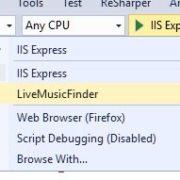You may also enjoy: Integrating Docker Solutions Into Your CI/CD Pipeline
Nancy is now wrapped up as a Docker image for execution in a pipeline or via an alias in a terminal.
 Nancy is a tool to check for vulnerabilities in your Golang dependencies, powered by Sonatype OSS Index. docker-nancy wraps the nancy executable in a Docker image.
Nancy is a tool to check for vulnerabilities in your Golang dependencies, powered by Sonatype OSS Index. docker-nancy wraps the nancy executable in a Docker image.










